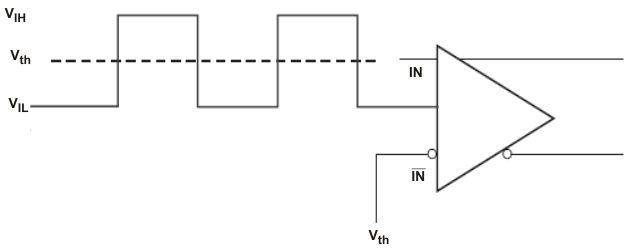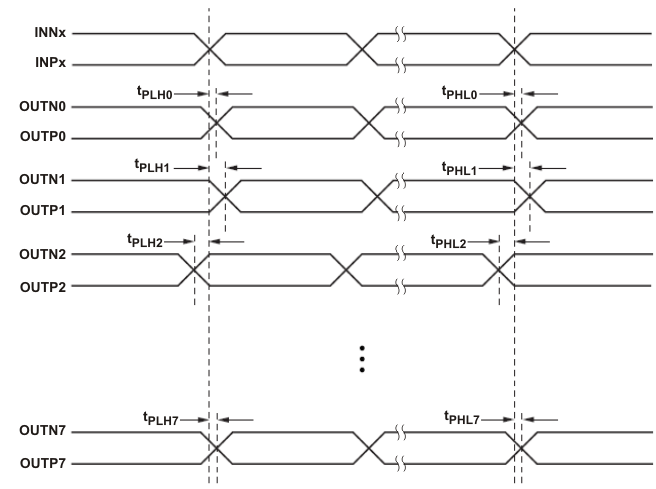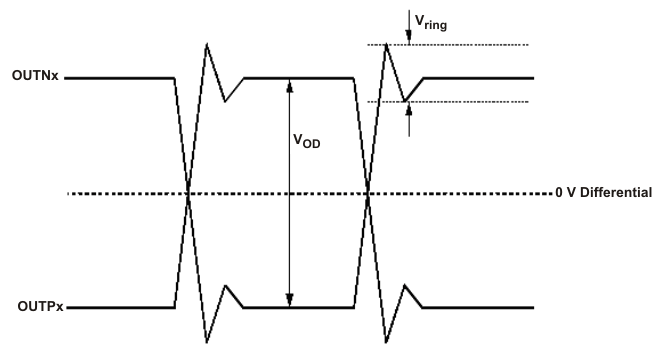ZHCSLT3B december 2020 – june 2023 LMK1D1204 , LMK1D1208
PRODUCTION DATA
8 Parameter Measurement Information
 Figure 8-1 LVDS Output DC Configuration During Device Test
Figure 8-1 LVDS Output DC Configuration During Device Test Figure 8-2 LVDS
Output AC Configuration During Device Test
Figure 8-2 LVDS
Output AC Configuration During Device Test Figure 8-3 DC-Coupled LVCMOS Input During Device Test
Figure 8-3 DC-Coupled LVCMOS Input During Device Test Figure 8-4 Output Voltage and Rise/Fall Time
Figure 8-4 Output Voltage and Rise/Fall Time
A. Output skew is calculated as the greater of the following: the difference between the fastest and the slowest tPLHn or the difference between the fastest and the slowest tPHLn (n = 0, 1, 2, ..7)
B. Part to part skew is calculated as the greater of the following: the difference between the fastest and the slowest tPLHn or the difference between the fastest and the slowest tPHLn across multiple devices (n = 0, 1, 2, ..7)
Figure 8-5 Output Skew and Part-to-Part Skew Figure 8-6 Output Overshoot and Undershoot
Figure 8-6 Output Overshoot and Undershoot Figure 8-7 Output AC Common Mode
Figure 8-7 Output AC Common Mode